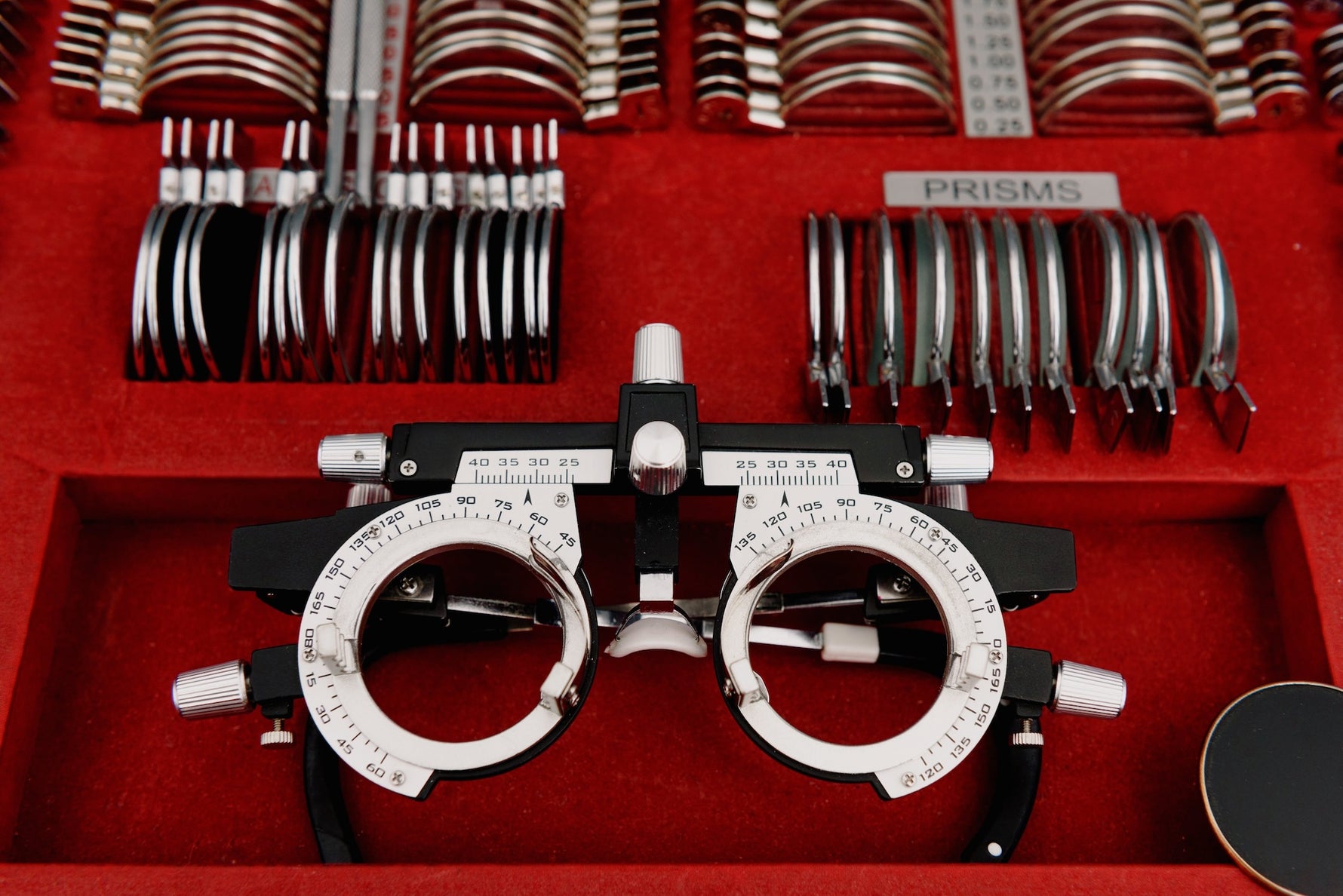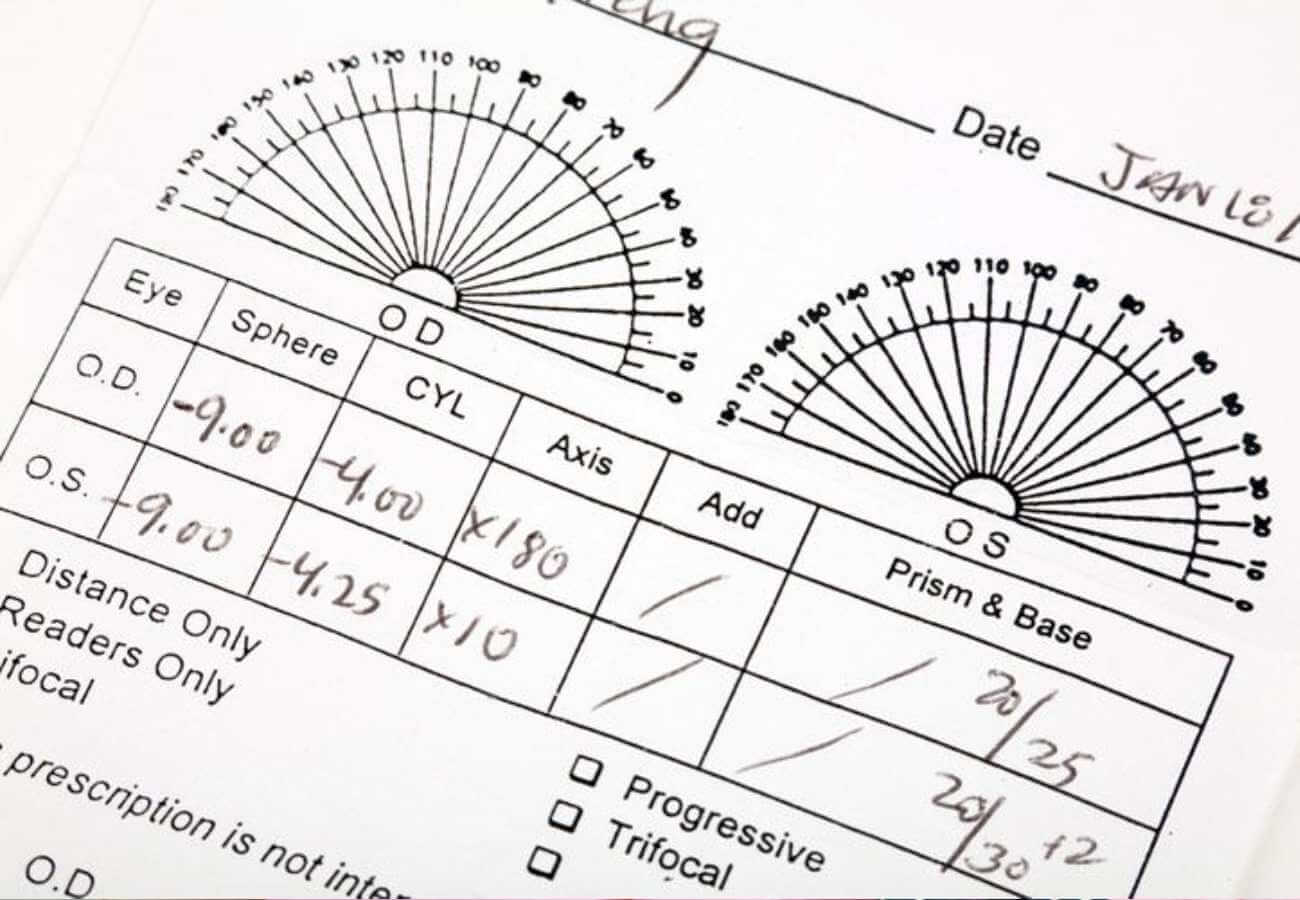
Reading an optical prescription may seem like a challenging task for those who are not familiar with the technical language used by opticians.
However, understanding it is essential to ensure that you get the right glasses for your visual needs. In this article, we will explore the various elements of an optical prescription and provide practical advice on how to interpret it correctly.
The components of an optical prescription
An optical prescription is made up of several key pieces of information, each of which plays an important role in correcting vision. Here are the main components:

1
Spheres (SPH)
Spheres (SPH) indicate the power of the lens needed to correct myopia or hyperopia.
2
Cylinder (CYL)
The cylinder represents the amount of correction needed for astigmatism. It can be preceded by a positive or negative sign.
3
Axis
The axis specifies the orientation of the astigmatism and is measured in degrees, ranging from 0 to 180 degrees.
4
Addition (ADD)
This value is used for bifocal or progressive prescriptions, indicating the correction needed for near vision.
5
Pupillary distance (PD)
Pupillary distance (PD) is the measurement between the centers of the pupils of the eyes.
Decoding the numbers: a practical example
To clarify the concept, let’s consider a hypothetical prescription example:
- SPH: -2.50
- CYL: -1.00
- Axis: 90
- ADD: +2.00
This means that the person has myopia of -2.50 diopters, astigmatism of -1.00 diopters with an axis of 90 degrees, and requires a correction of +2.00 diopters for near vision.

Practical tips for interpretation
In addition to understanding the technical elements of an optical prescription, it is essential to consider some practical tips that can facilitate the interpretation process and ensure an optimal choice of glasses.
First of all, when you come across an optical prescription, do not hesitate to consult directly with our opticians. ILOP opticians are experts in deciphering the details of the prescription and can offer personalized advice based on your specific visual needs. Their expertise is valuable in ensuring an accurate and comfortable visual correction.
Furthermore, becoming familiar with the terms used in prescriptions can be very helpful. Understanding the difference between myopia and hyperopia, and recognizing the meaning of positive and negative values, is the foundation for correctly interpreting the prescription. For example, a positive SPH indicates hyperopia, while a negative SPH indicates myopia.
A crucial element to consider is the axis of astigmatism. Think of the axis as the orientation of a compass: 0 degrees represents the top, 90 degrees represents the right, 180 degrees represents the bottom, and 270 degrees represents the left. This understanding of the axis is essential to ensure accurate astigmatism correction.
During the interpretation process, carefully observe the positive and negative signs associated with the prescription values. A positive SPH indicates hyperopia, meaning difficulty focusing on close objects, while a negative SPH indicates myopia, meaning difficulty seeing distant objects clearly.
**Remember that the prescription may also include a value for ADD, which indicates the correction needed for near vision. This is particularly important for those who require bifocal or progressive lenses."
In conclusion
Deciphering an optical prescription may initially seem like a challenging task, but with a deeper understanding of its components, it becomes more accessible. Always remember to consult the ILOP professionals for choosing the lenses that best suit your individual needs. An accurate prescription is the first step toward clear and comfortable vision.




